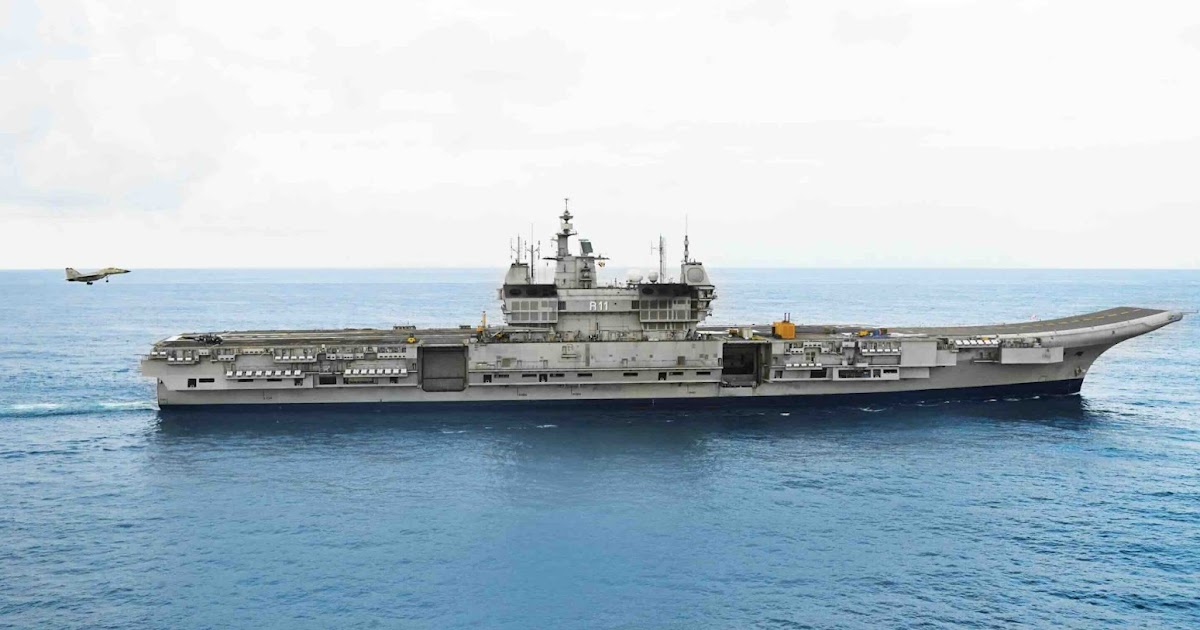
MiG-29K comes in for a deck landing on INS Vikrant, India’s first indigenous aircraft carrier
Defence Minister Rajnath said:
· “India was once a landlocked country with sea shores, but now it can be seen as an island country with land borders.”
· While the navy and Coast Guard have their own strengths, mandates and working styles, greater coordination is needed.
· 64 ships and submarines are under construction in Indian shipyards.
· Orders have been placed for 24 additional platforms.
· During the last 5 years, more than two-third of the Navy’s modernisation budget has been spent on indigenous procurement.
By Vikas Gupta
19th September 2024
Addressing the second Naval Commanders’ Conference 2024 in New Delhi on Thursday, September 19th, Defence Minister Rajnath Singh commended the Indian Navy for its crucial role in promoting peace and prosperity in the Indian Ocean.
Terming the region as sensitive in view of its economic, geopolitical, trade and security aspects, Rajnath Singh said “India was once a landlocked country with sea shores, but now it can be seen as an island country with land borders.”
The Naval Commanders’ Conference is an apex-level biannual event where the top naval commanders deliberate on significant strategic, operational and administrative issues. Given the region’s evolving geostrategic dynamics and complex security situation, decisions taken during the conference play a crucial role in shaping the course of the Indian Navy.
Said Rajnath Singh: “A large part of the world’s trade passes through the region. At the same time, incidents like piracy, hijacking, drone attacks, missile attacks and disruption of sea cable connections make it extremely sensitive. Our navy has made a significant contribution in protecting the economic interests of all stakeholder nations of Indo-Pacific and in smooth movement of goods in the Indian Ocean region. Its anti-piracy operations are garnering appreciation not only in India but also globally. Whenever need be, we will ensure security in the region.”
The defence minister revealed that 64 ships and submarines are currently under construction in Indian shipyards, and orders have been placed for 24 additional platforms.
He added that, during the last five years, more than two-third of the Navy’s modernisation budget has been spent on indigenous procurement, accelerating the development of the domestic defence ecosystem.
Prime Minister Narendra Modi’s government is endeavouring to make the Indian Navy more potent by inducting state-of-the-art warships, submarines etc. with a focus on “Aatmanirbharta” (self-sufficiency).
Rajnath Singh believes that the vision to transform the Navy from a “buyer’s navy” into a “builder’s navy”’ will help in making it fully self-reliant by 2047.
Rajnath also stressed on the need for jointness and optimum utilisation of resources. He stated that while the navy and Coast Guard have their own strengths, mandates and working styles, greater coordination is needed to strengthen the country’s maritime security.
As part of the conference, Rajnath Singh also attended a “technology demonstration”. Various agencies, including the navy’s premier research and development establishment, the Weapons & Electronics Systems Engineering Establishment (WESEE) showcased several indigenous solutions. These included autonomous systems, domain awareness, software defined radios and other niche technology initiatives.
Chief of Defence Staff (CDS) General Anil Chauhan, Chief of the Naval Staff (CNS) Admiral Dinesh Tripathi, Defence Secretary Giridhar Aramane and other senior civilian and military officials were present on the occasion.






